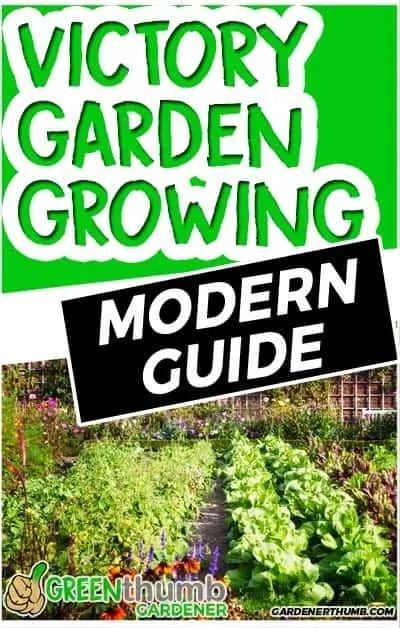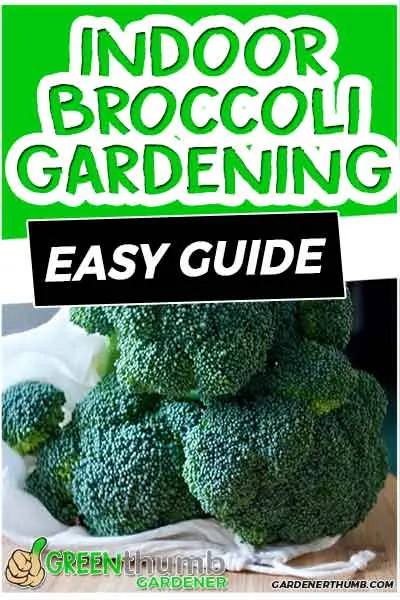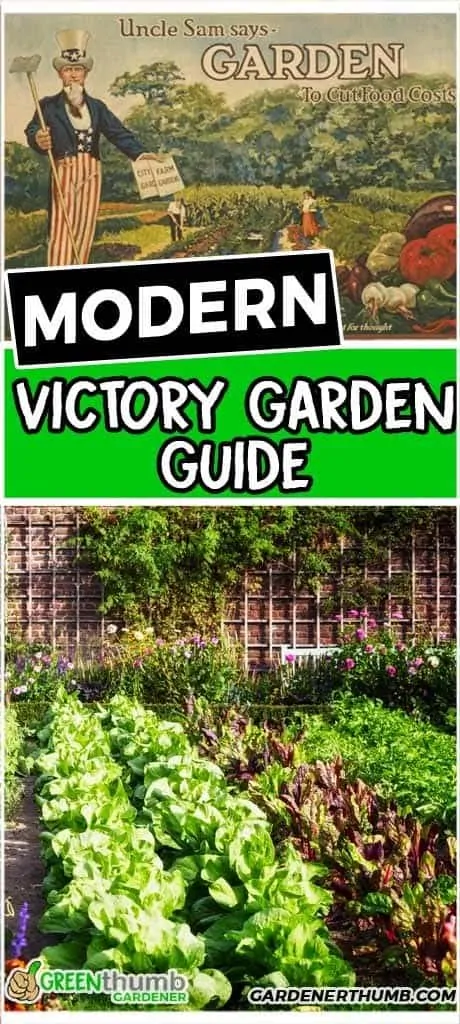Growing a Victory Garden | The Modern Way
Last updated: 04/05/20
The concept of how to build a victory garden is not only interesting because of the historical circumstances from which it sprung up, but also because it can be applied in our present situation.
I sincerely believe that victory gardens are the perfect panacea for the uncertain times as well as an ailing global economy. Grocery stores may not always have some of the tastiest tomatoes either.
Resurgence here would boost supplies of vegetables, fruits, and herbs and bolster physical, mental and spiritual well being, wouldn’t you agree?
Green thumb Gardener occasionally links to product and/or services offered by vendors to assist you with all your gardening needs. Some of these may be affiliate links, meaning we earn a small commission if items are purchased.
Want to Download a Garden Hack Guide for FREE

Enter your email below and we will send you a guide to help you SAVE money in your garden.
History of a Victory Garden | When Did Victory Gardens Start?
During the World Wars I and World Wars II era, the most important thing to everyone at the battlefront and those at the home front was the constant availability of food supplies.
Part of the war effort was to supplement food and victory gardens fit the bill.
Public food supplies were stretched to their limits and front line troops were in dire difficulties.
It was a dilemma because the front line soldiers were bereft of food supplies.
The home front also suffered from similar deprivations.
It became clear that a sustained supply of foodstuff had to flow from other sources.
Governments had reached their limit and it was now the private sector to the rescue. The ordinary people had a major role to play in the rescue of their countries.
During the battles, national governments of both foe and allied armies alike acted independently to address the food shortages as part of the war effort.

It was from all this and of chronic food shortage that the almost miraculous idea of victory gardens also known as food vegetable gardens for defense sprang into existence.
It all began during World War I, when victory gardens sprung into existence in the U.S., U.K., Canada, Germany, and Australia, and was to resurface later again in World War II.
The concept of victory gardens also known as food gardens for defense started in Canada in 1917.
It was here that all residents of every city, town, and village were urged to make space available in their backyard for the planting of vegetables for their own use and during times of conflict. Grocery stores now included your backyard & garden centers.
Similar measures were adopted in the United States which suffered from lack of farm laborers due to enlistments in the army. The national effort focused on training in agriculture & growing food, gardening to help with food shortages.
Food rationing in Australia and the UK plagued the two countries and were forced to adopt similar austerity measures.
Growing a victory garden full of vegetables, fruits and herbs were solidified by world war II. It is estimated that 420 million victory gardens were grow during this period.
Victory Garden Planning
No matter what project you may have in mind, proper planning and designing of your venture is one way to ultimate success.
You can plan to accommodate a victory garden using a combination of these types:
- Traditional Garden Bed
- Raised Garden Bed
- Container Garden & Potting Soil
Check out our guide on container gardening here.
We will focus on a traditional or raised bed approach for our victory garden, but don’t let that stop you even if you only have window boxes.
Keep in mind that a raised bed will require soil from a garden center or local garden hardware store.
Planning always involves numbers and the magic number this time is a family of 5 and the ideal area that will accommodate the needs of a 5 member family is a 40’x 61’ foot garden.
This is your garden area which needs to be cleaned and made level before tilling or building your raised bed.
Follow these basic steps to get started:
- Identify the area that would agree to these dimensions
- Mark the area by either some stakes and twine
- Determine how to effectively use the area for your planting or to layout your local garden.
The easiest and most suitable layout for your garden should follow traditional gardening where rows are the norm. They are easy to configure and easier to manage given the variety of veggies, fruits, and herbs you’ll be growing.
Mark out the rows keeping in mind the size of plants. Note that the row method can be varied with the use of other techniques such as using pots and containers positioned at strategic places in your garden have also been successful.
Nevertheless, it is not enough just to have the rows all marked out because it’s also important to know how to space your plants in their rows so that they have sufficient space for inducing comfortable growth.
This can be difficult for a new beginner at gardening so you should use the distances applied between the seedling plants as shown in the gardening plan.
If you need help with when to plant, consult the planting times of the same plan and you’ll know when to plant
Designing a Victory Garden
Designing your own victory garden can be a very rewarding task. Yet it is vital that you should give considerable thought during the planning stage.
Limitless Design of Victory Gardens
There are limitless possibilities and gardens that can be designed. They are formed with precision, beauty, and charm.
You can build them anywhere such as on the rooftop, backyard, front yard, patio or open ground.
These victory gardens are built not only for a steady supply of vegetables, fruits, and herbs but are also meant to beautify your spatially restricted surroundings.
You will be provided with a garden packed with food-producing plants and an extremely attractive ecological landscape that will mesmerize your friends and neighbors with their productivity and elegance.
You can feast your eyes on the front yard of your home where the landscape has been transformed from a dull, ordinary and unexciting view to a robust, dynamic and absolutely exciting.
Whether you want a facelift to your backyard space, this can also be personalized to suit your taste and to produce abundance.
Your own patio can be turned into a miniature resting and relaxing place that exudes myriad colors around you.
Importance of Soil Health in Your Design
Designing a garden should also include optimizing your soil health. This could mean having structures such as compost piles or worm composting bins close by.
You also need to know what amendments that you may need to procure to build up your soil. Some of the common amendments include:
- Compost
- Cow Manure
- Chicken Manure
- Mushroom Compost
- Leaf Mulch
- Peat Moss
- Sand

This list is not exhaustive, but it is what some new gardens patches may need to get started on a smaller scale. Keep in mind the access to water as well when you are designing your victory garden.
Best Vegetables to Grow For a Victory Garden
This list was put together with finding vegetables that are both easy to grow and have the maximum calories in the space needed to grow them.
These types of vegetables are also easy to store in your food pantries and save seeds for each year.
We included some notes on why these are good picks.
Grab your seed packets to start planting.
- Lettuce – Loads of vitamins and can be cut over and over again.
- Butternut Squash – long storage & loads of vitamins
- Green Beans – rich in vitamins and able to be canned
- Yukon Potatoes – rich in starch and long storage
- Carrots – preferably a mix of smaller and larger types. Rich in vitamins & flavor
- Tomatoes – pick a cherry variety and a Roma type for canning
- Detroit Red Beets – vitamins and calorie-rich. Great to plant in both spring and fall gardens
- Swiss Chard – rich in vitamins
- Kale – rich in vitamins
- Spinach – loaded with vitamins and good spring and fall crop
- Bush Beans – best for storage (black beans)
- Sugar Snap Peas – cold weather crop, so can be grown in both spring and fall
- Yellow Squash – packed with vitamins and starches.
- Zucchini squash – flavorful and rich in vitamins
- Onions – medicinal and flavor
- Garlic – Adds flavor & medicinal
- Radishes – grows quickly and full of vitamins
- Berries – loads of vitamins and flavor

9 Tips for Planting a Victory Garden With Further Resources
This is also a critical time for your success and you need to be tuned in with your surroundings before you can actually dive in a do your planting.
Check out our resource guide below for more help on specific topics.
- Know that the soil before you have already built a soil ecosystem of its own which is thriving. You can only add your boosting touch.
Test the soil, prepare it by softening it up to a depth of about 6 to 8 inches adding compost and other nutrients to invigorate the soil as you go. - In our gardening plan model, you are set to plant a total of 23 vegetables, fruits, and herbs in your prepared rows and you’ve already taken note of the sizes of your plants
- If you are planting in raised beds, this is the best time to build them before planting.
- Carefully transfer your plants from your seedling bed making sure no damage occurs to the plants.
- Know your seasons well and the right time to plant each of the plants following the “Planting Times” schedules for planting seedlings indoors, planting outdoors, and harvesting, shown.
- You will definitely use the compost heap you already generated from your composting activities, so you’ll need to do your own composting to replace what you have used for your new plants.
- A lot of nutrients are extracted from the soil by your growing plants causing poor soil making plants susceptible to diseases and decay that attract pests. Crop rotation becomes critical during this stage to disrupt the lives of pests and diseases and for invigorating the soil.
- The life of a plentiful supply of vegetables, fruits from your garden can be extended in the form of canned or frozen treats. These preservation methods will enable you to enjoy the taste of the summer harvest season to linger on through subsequent seasons of autumn and fall.
- One of the environmental benefits of gardening is the planting of pollen-rich flowers which are favorite fare to butterflies, bees, and hummingbirds and enable them to do nature’s many wondrous works.
Final Thoughts
As can be seen, success in gardening depends on a cluster of interacting factors. You can quickly grow a garden should the need arise.
These factors exist in nature itself, in the atmosphere, the soil and in man himself. In order to satisfy his culinary appetite, he searched for and discovered how to grow a victory garden for growing vegetables, fruits and herbs.
This gardening revolution survived two World Wars and became an indelible legacy that will survive well into the future.








